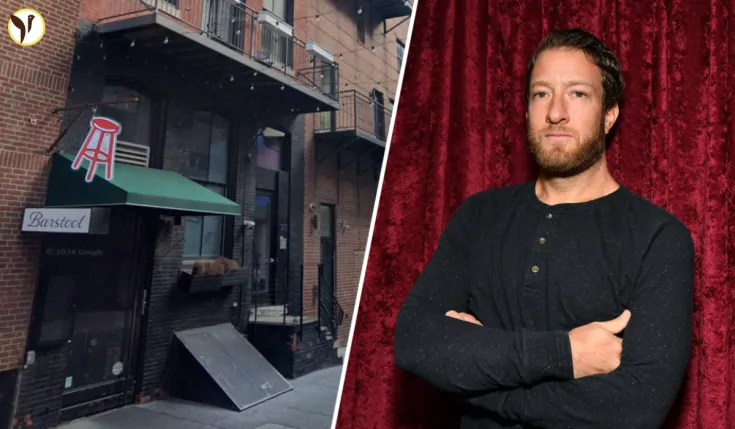Dave Portnoy's Unconventional Response to Antisemitism at Barstool Philadelphia
Dave Portnoy, the controversial founder of Barstool Sports, recently faced a public relations crisis after an antisemitic incident at his Philadelphia bar, Barstool Sansom Street. A video went viral showing a sign with a hateful anti-Jewish slur, created at the request of patrons and displayed by bar staff. Portnoy's initial reaction was explosive, filled with fury and threats of retribution. However, his response took an unexpected and highly debated turn, sparking a conversation about accountability and the effectiveness of different approaches to combating hate.
The Incident and Initial Outrage
The incident unfolded when a group of patrons, including Temple University students, requested a sign bearing a vile antisemitic message as part of their bottle service. Shockingly, bar staff complied. The video quickly spread across social media, resulting in widespread condemnation. Portnoy, himself Jewish, reacted with intense anger, releasing a video filled with expletives where he vowed to "ruin" those responsible. He expressed feeling deeply shaken and betrayed.
- Immediate consequences: Two servers who facilitated the request were immediately fired.
- Wider ramifications: The incident ignited a firestorm of debate around hate speech, accountability, and the responsibility of businesses to prevent such incidents.
- Institutional response: Temple University swiftly responded, placing at least one student on interim suspension and issuing a statement condemning antisemitism.
- Law enforcement involvement: Both Philadelphia Police and the Anti-Defamation League (ADL) launched investigations.
A Shift in Strategy: Education over Retribution?
Portnoy’s initial rage eventually gave way to a different approach. In a subsequent video, he announced his plan to send the individuals responsible for the sign on a trip to Auschwitz-Birkenau, a former Nazi concentration camp in Poland. This surprising move presented a controversial alternative to simply punishing the offenders. Portnoy framed this as a “teaching moment,” prioritizing education and understanding over retribution.
His rationale was that the young people involved acted out of ignorance and intoxication, not deep-seated hatred. He stressed the importance of learning from this mistake and emphasized the need for preventing future occurrences. He stated that he had spoken with the individuals and their families, who reportedly agreed to the trip.
- The Auschwitz Trip: This highly unusual response raised significant questions about the effectiveness of using such a method to combat antisemitism.
- Debate and Discussion: The decision sparked intense discussion about whether education is a superior alternative to punishment in addressing hate speech.
- Public Figure Influence: Portnoy's actions highlighted the considerable power public figures have in shaping discourse and influencing public opinion on important social issues.
Conclusion: A Complex and Unfolding Narrative
The antisemitic incident at Barstool Sansom Street serves as a stark reminder of the pervasive challenge of antisemitism and hate speech in society. Dave Portnoy's response, while unconventional and controversial, undeniably initiated a crucial conversation about how to address these issues effectively. His initial anger and desire for immediate justice were eventually tempered by a commitment to education. Whether this unconventional approach proves successful remains to be seen, but the incident and its aftermath have undoubtedly sparked a vital dialogue on combating hate and fostering understanding.
The long-term effects of Portnoy's actions, and the effectiveness of an Auschwitz trip as a deterrent to future antisemitic acts, will require further observation. However, the incident highlights the ongoing complexities of addressing hate speech and the need for innovative and thoughtful responses.






